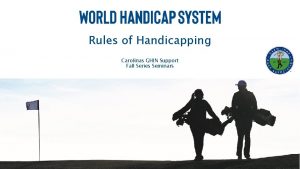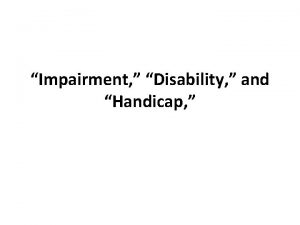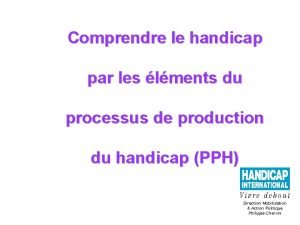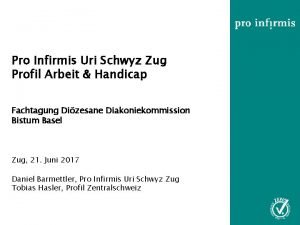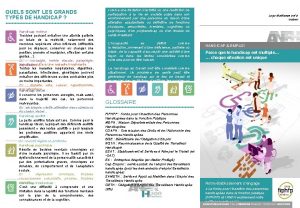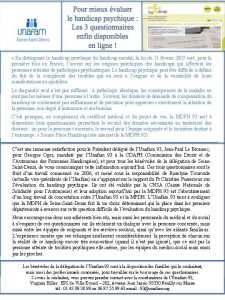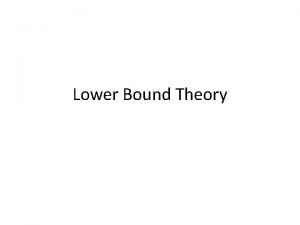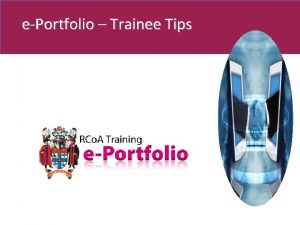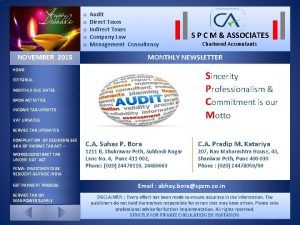LOWER YOUR HANDICAP LOWER YOUR TAXES Tips to

















![[Insert company logo] Investments involve risk, including the possible loss of principal. Please ask [Insert company logo] Investments involve risk, including the possible loss of principal. Please ask](https://slidetodoc.com/presentation_image/e6cebbfe891f29029d5effcfc1f49107/image-18.jpg)
- Slides: 18

LOWER YOUR HANDICAP LOWER YOUR TAXES Tips to help you enjoy potentially more success in golf and retirement

Enhancing Your Game 5 tips to help reduce your handicap

YOUR MINDSET Save up to 5 -7 shots per round v Always anticipate a positive result → When setting up your shot, always put yourself in the mindset that something good is going to happen → Tell yourself that you couldn’t miss if you tried → This will increase your confidence and help you relax, greatly increasing the chances of a positive result

FOCUS Know when to maintain your focus v Maintaining your focus for the entire 18 holes is impossible; don’t even try to do it! v The two times when focus is required: → When deciding what shot to play and which club to hit → When you are actually swinging, at which time you’ll need to be completely committed and focused v You only need short and intermediate periods of focus with plenty of time in between for a mental break, making it easy to stay focused for the entire 18 holes!

PRACTICE TIME Save up to 3 -5 shots per round v Maximize your practice time → Make sure you put in as much practice time from 50 yards and in as you do from 50 yards and out! v Practice your short game first, then move to your long game → This guarantees that the short game won’t be forgotten!

PUTTING Focus on the Magic Number 31 v If you’re taking more than 31 putts per round, then you’re losing strokes in your scoring game → Make sure you are hitting your chip shots solid for good distance control → Work on your lag putting to keep 3 -putts to a minimum → Practice short putts from 3 feet or less

TOURNAMENT TIME Save up to 5 -10 shots per round v v Make sure you are sharp on all shots from 50 yards in → Focus on great control on the greens, consistent bunker shots, high and soft lob shots, and good bump and run shots → Don’t forget the short putts too! Concentrate on accuracy with your tee shots → v Keep the ball in play so you have the opportunity to score. Length off the tee will not be a huge factor in posting a low number Know the course before a big round → Schedule a practice round to get familiar with the course condition and layout. (This alone could save you 3 to 5 shots per round. )

Lowering Your Taxes Tips to help you save in 3 areas: v Investments v Retirement v Estate plan Please note that most of the tax discussion in this presentation applies only to federal income taxes and not necessarily to state and local income taxes. Federal income tax laws are complex and subject to change. While the tax representations made herein are believed to be accurate, the information may not necessarily be current or complete. You are cautioned to seek the advice and counsel of your tax attorney or advisor for complete information concerning your particular circumstances.

Preparing for Higher Taxes Recent tax changes could have a significant impact on your retirement income and legacy Type Maximum income tax rate* For top earners making more than $400, 000 (Single) or $450, 000 (Married filing jointly) Maximum capital gains tax rate* For taxpayers making more than $400, 000 (Single) or $450, 000 (Married filing jointly) Maximum estate and gift tax rate 2012 2013 35% 39. 6% 15% 20% 35% 40% Note: Federal tax laws are complex and subject to change. Please seek the advice of an independent tax advisor for complete information concerning your particular circumstances. *Maximum tax rates will only tax the amount of money over $400 k or $450 k an individual or family makes

INVESTMENTS Tip #1 Reducing capital gains tax by selling securities at a loss v Losses can be used to offset capital gains v Up to $3, 000 can be applied to reduce current taxable income even if there are no capital gains for the year v Unused losses generally can be carried forward to the next year until they are exhausted Note that selling a security for a loss and buying a substantially identical security within 30 days of the sale date is considered a "wash sale. ” Losses from wash sales cannot offset gains.

INVESTMENTS Tip #2 Investing in tax-exempt municipal bonds Pay no federal income tax on earnings* Avoid state and local income tax if bonds are purchased from your home state Tax-exempt income may contribute to an increase in the taxes you pay on Social Security benefits *Alternative Minimum Tax (AMT) may apply in some cases. Note: Municipal bonds are subject to risks, including call risk, credit risk, inflation risk, interest rate risk, and liquidity risk.

RETIREMENT Tip #3 Deferring taxes v Tax-deferred income is generally not included in the calculation that determines how much of your Social Security benefits is taxable income v With tax-deferred investments like IRAs, 401(k)s and variable annuities, an individual generally pays no current income tax on capital gains, interest or dividends v 100% of your money stays in your investment, giving you the potential to generate more earnings over time Note: Withdrawals of taxable amounts are subject to ordinary income tax and, if taken prior to age 59½, an additional 10% federal tax may apply.

RETIREMENT Tip #4 Maximizing IRA or 401(k) contributions 401(k) Example—for investors age 50+ (married filing jointly): Lower Contribution Maximum Contribution (3% of $155, 000 annual salary) (14. 8% of $155, 000 annual salary) $4, 650 $23, 000 $150, 350 $132, 000 28% 25% $93, 000 $460, 000 Balance w/ 8% returns over 20 yrs. $229, 817 $1, 136, 727 Earnings $136, 817 $676, 727 Annual contribution Current taxable income Marginal income tax bracket Total contributions over 20 yrs. With maximum contributions, you would pay less tax and earn $539, 911 more over 20 years! Note: This hypothetical illustration does not represent the performance of any investment, nor the fees and charges associated with any investment. Contributions are made on a pre-tax basis. Withdrawals are subject to ordinary income tax, and an additional 10% federal tax may apply if withdrawals are made prior to age 59½. Please note that you can withdraw assets from an employer-sponsored plan without paying the additional 10% federal tax, as long as you have left the company and the separation occurred on or after age 55.

RETIREMENT Tip #5 Using the NUA Strategy to reduce taxes on plan distributions of company stock Example: Total market value of employer stock (Cost basis = $200, 000; net unrealized appreciation (NUA) = $800, 000) Income tax at time of distribution Tax when stock is sold for $1 million Total tax paid Rollover Option NUA Option $1 million $0 $79, 200 Rollover is tax free Assuming a 39. 6% income tax on $200, 000 cost basis $396, 000 $160, 000 Assuming a 39. 6% income tax on $1 million Assuming a 20% capital gains on $800, 000 NUA $396, 000 $239, 200 TAX SAVINGS $156, 800 This hypothetical illustration is intended only to show the NUA Strategy works. It does not reflect the tax or investment value of any specific investment. This example does not reflect any transaction fees or state and local taxes. Assumptions: $1 million in highly appreciated company stock that has been held for more than 12 months; $200, 000 original purchase price (i. e. cost basis); 39. 6% federal income tax rate; no 10% early withdrawal tax penalty; and no state or local income tax. This example does not include calculations for the 3. 8% net investment income tax.

ESTATE PLAN Tip #6 Reducing the gross estate through lifetime gifts v Pay no gift tax on lifetime gifts of up to $5. 25 million ($10. 5 million for married couples)* v Plus, individuals can continue to make gifts free of estate or gift tax, as long as they are under the annual exclusion amount ($14, 000 for 2013)! *Note: Estate tax and gift tax exemptions are unified, so if individuals use all of their $5. 25 lifetime gift-tax exemption in 2013, they will also deplete their estate tax exemption. Any additional assets that are left in the estate at the time of death may be subject to estate taxes.

ESTATE PLAN Tip #7 Creating a tax-free legacy using Roth IRAs v v Naming your spouse or child as the beneficiary → Beneficiaries can withdraw earnings tax-free, provided the assets have been in the Roth IRA for at least 5 years → Tax-free income may be stretched for many years → Planning considerations: income tax due upon Roth IRA conversion; best to pay income tax with assets outside of the Roth IRA Gifting assets to your children or grandchildren to help them fund their own Roth IRAs → Can reduce your taxable estate and help your loved ones grow their retirement assets on a tax-free basis!

Are you ready to lower your Let’s get started by teeing golf and tax handicaps? off for retirement!
![Insert company logo Investments involve risk including the possible loss of principal Please ask [Insert company logo] Investments involve risk, including the possible loss of principal. Please ask](https://slidetodoc.com/presentation_image/e6cebbfe891f29029d5effcfc1f49107/image-18.jpg)
[Insert company logo] Investments involve risk, including the possible loss of principal. Please ask me about the risks and fees associated with your current investments and any investments that may be recommended in the future. Securities offered through [company name] [Insert additional BD required disclosures] Not FDIC or NCUA/NCUSIF Insured M 5170 CE 2. 1 (5/13) May Lose Value No Bank or Credit Union Guarantee Not a Deposit Not Insured by Any Federal Government Agency
 Which act taxed colonists without their consent? *
Which act taxed colonists without their consent? * Course handicap formula
Course handicap formula My handicap mon dossier
My handicap mon dossier What causes speech impediment
What causes speech impediment Golf handicap beregner
Golf handicap beregner Examples of handicap and disability
Examples of handicap and disability Icidyfrozen 26
Icidyfrozen 26 Icidh-2 model
Icidh-2 model Why is harrison bergeron such a threat to society?
Why is harrison bergeron such a threat to society? Processus de production du handicap pdf
Processus de production du handicap pdf Bond voor gehandicaptensport
Bond voor gehandicaptensport Handicap international sri lanka
Handicap international sri lanka Handicap
Handicap Examples of handicap and disability
Examples of handicap and disability Handicap et pauvreté
Handicap et pauvreté 85 golf handicap chart
85 golf handicap chart Mission handicap strasbourg
Mission handicap strasbourg Loi sur le handicap 2005
Loi sur le handicap 2005 Pro infirmis schwyz
Pro infirmis schwyz

